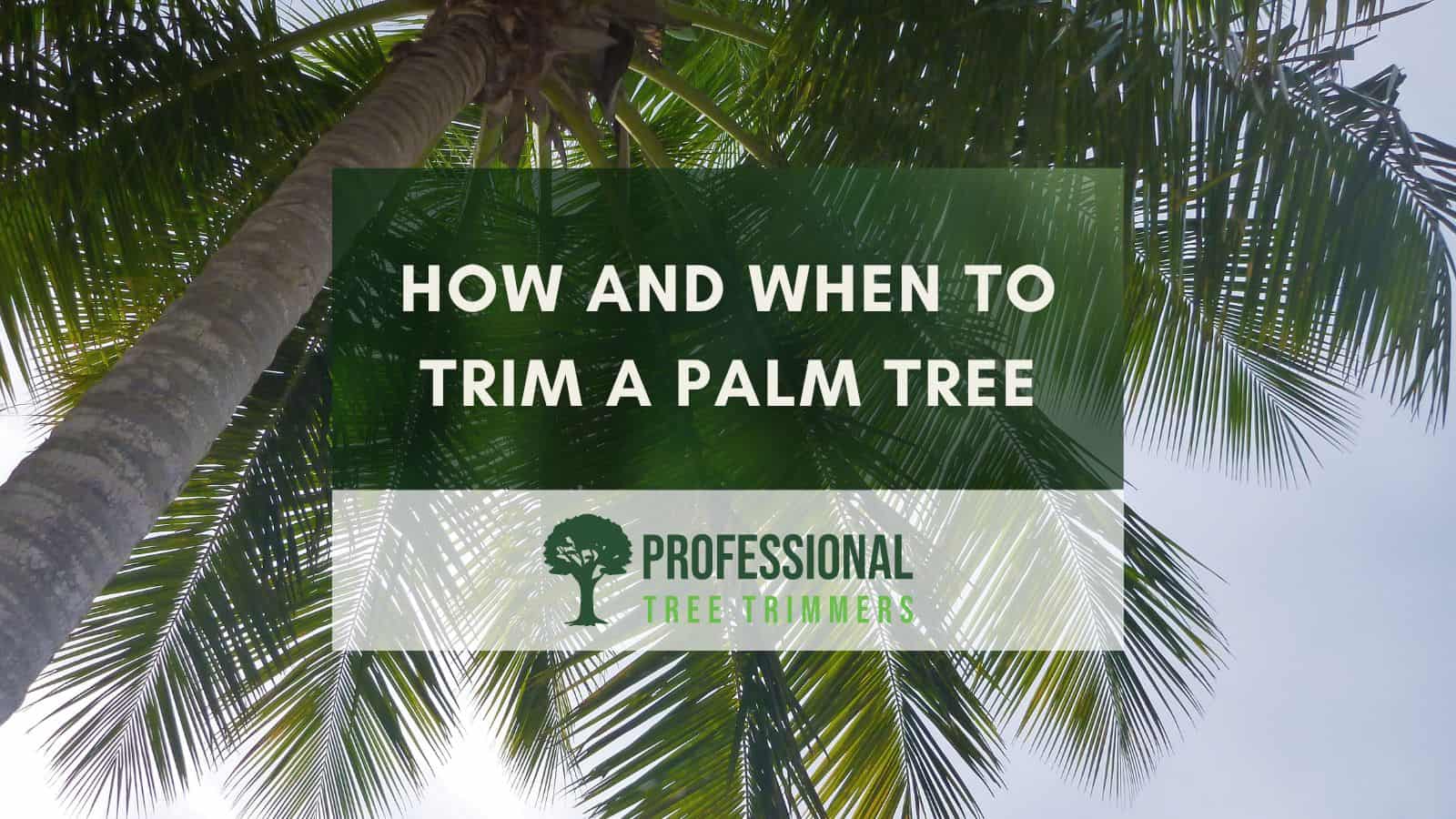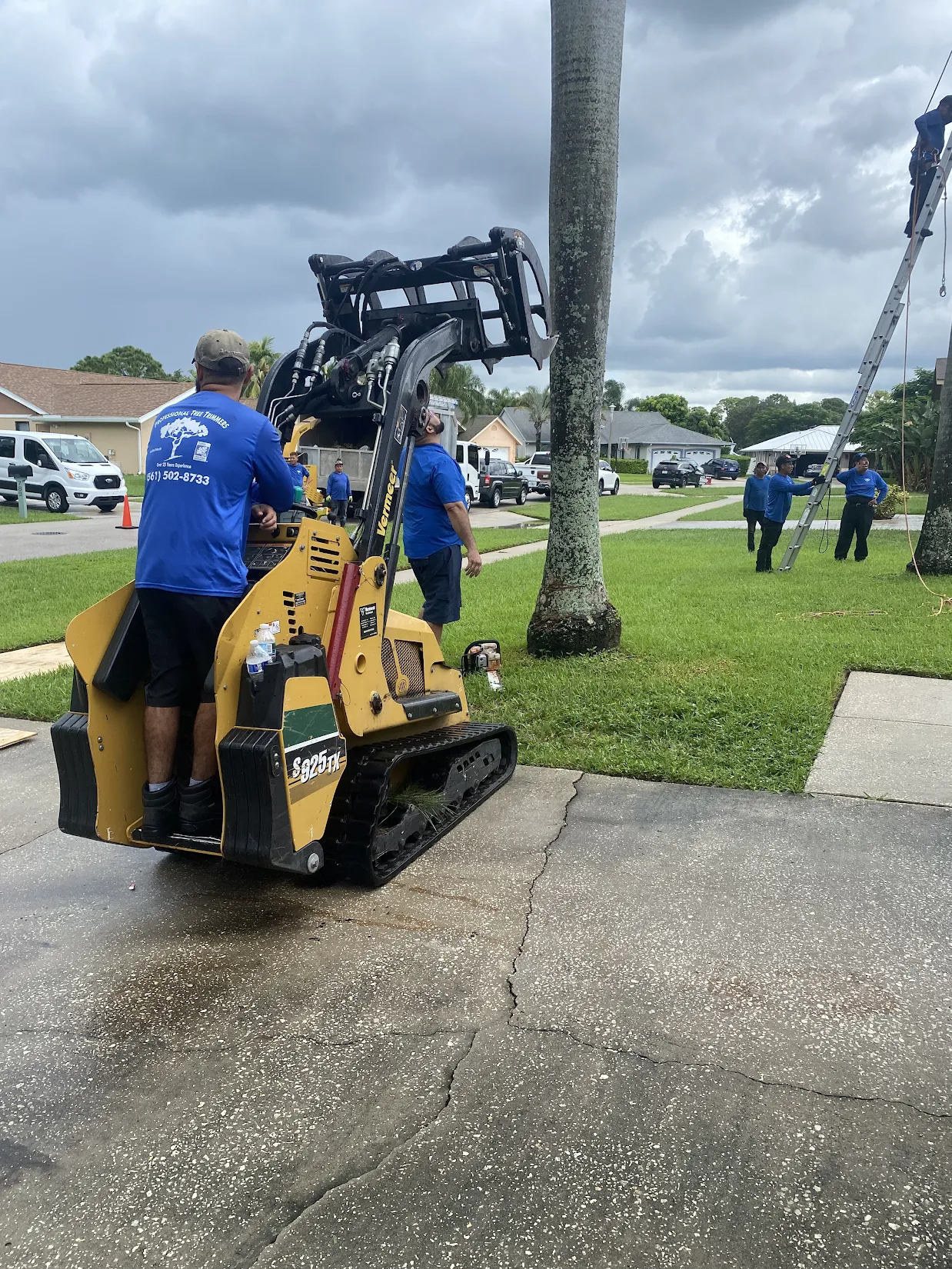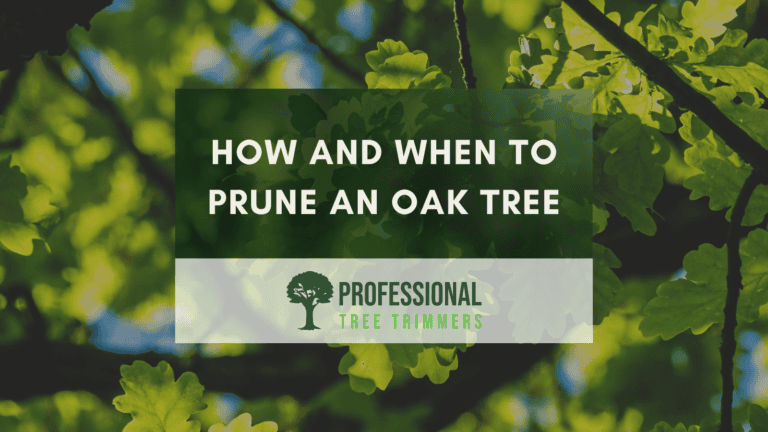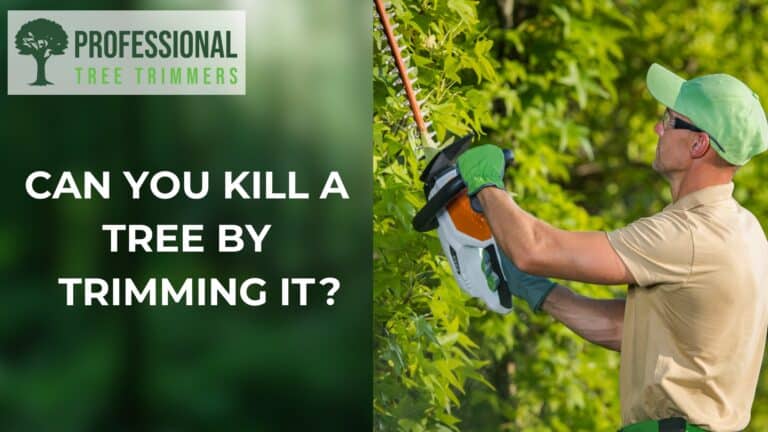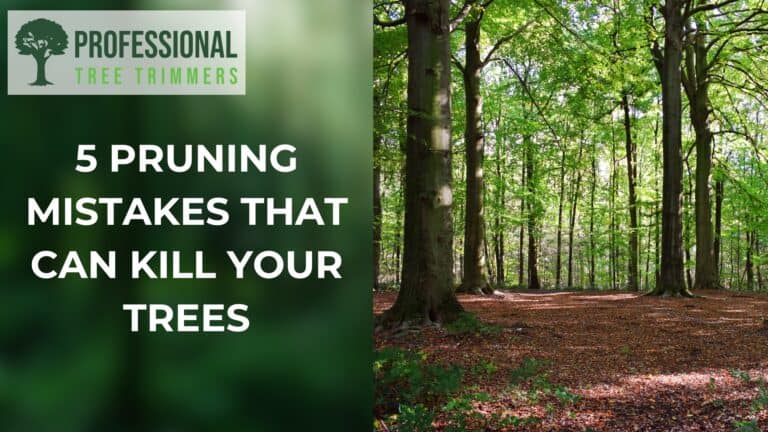Trimming a palm tree is an essential practice to maintain its health and aesthetics. Proper trimming not only enhances the tree’s appearance but also promotes its growth and prevents potential hazards. Understanding when and how to trim a palm tree is crucial for homeowners and landscapers alike.
Trimming a palm tree serves multiple purposes. It removes dead or dying fronds, enhancing aesthetics and mitigating safety hazards from falling debris. Additionally, trimming promotes air circulation within the canopy, reducing the risk of fungal growth and pest infestations. Moreover, by eliminating excess weight from the canopy, trimming helps prevent damage to the tree during storms and high winds.
How Do You Trim a Palm Tree without Killing It?
To trim a palm tree without harming it, look for brown or broken fronds to remove, avoiding yellowing or green ones. Use a serrated knife, pruning shears, or a saw, ensuring a two-inch gap between the trunk and where you cut. Wait until spring for trimming, and never prune solely for cosmetic reasons to avoid damaging the tree.
Trimming a palm tree is essential for its health and appearance, but it must be done correctly to avoid harming the tree. Here’s how to trim a palm tree without killing it:
- Assess the Tree: Before starting, evaluate the palm tree to identify any dead, diseased, or damaged fronds that need to be removed. This will guide your pruning efforts and ensure you’re not unnecessarily cutting healthy foliage.
- Prepare Your Tools: Make sure your pruning tools, such as pruning shears or pruning saw, are clean and sharp. Sterilize them with rubbing alcohol or a bleach solution to prevent the spread of diseases between plants.
- Identify Fronds for Removal: Focus on removing only the dead, dying, or yellowing fronds from the palm tree. Avoid cutting green, healthy fronds, as they are essential for the tree’s photosynthesis and growth.
- Follow the 9-3 Rule: When pruning, adhere to the “9-3 Rule,” which means removing fronds that are growing at a 9 o’clock to 3 o’clock angle. These fronds are typically older and may be nearing the end of their lifespan. Aim to remove only the dead, dying, and broken fronds from your palm tree. This will ensure that your tree remains healthy and strong.
To maintain the health and growth of a palm tree, avoid cutting off its green fronds, especially if they’re pointing toward the ground, as this can cause damage. Ensure a clean cut by cutting each frond at least 2 inches (5.08 cm) from the trunk. Remove flowers and developing fruit if your species produces them, as this can also harm the tree. Never trim the crown of a palm tree, as this can negatively impact its overall health and growth. - Use Caution: Be mindful of the palm tree’s growth pattern and avoid cutting too close to the trunk. Cutting into the trunk or removing too many fronds can stress the tree and make it susceptible to disease or pests.
- Avoid Climbing Spikes: Refrain from using climbing spikes when pruning palm trees, as they can cause permanent wounds to the trunk. Instead, use a ladder or other safe climbing equipment to reach higher fronds.
- Prune Sparingly: Palm trees do not require frequent pruning, so avoid over-trimming. Aim to prune only once or twice a year, focusing on removing dead or damaged fronds and maintaining the tree’s natural shape.
By following these steps and using caution, you can effectively trim a palm tree without causing harm and ensure its continued health and vitality.
What You Need to Prune a Palm Tree
To prune a palm tree safely and effectively, you’ll need the following items:
- PPE (Personal Protective Equipment): When pruning a palm tree, wear appropriate PPE such as gloves, safety glasses, and sturdy footwear to protect yourself from potential injuries caused by falling fronds or sharp tools.
- Clothing: Choose long-sleeved shirts and pants to shield your skin from scratches and irritations caused by palm fronds and branches. Opt for breathable fabrics to stay comfortable while working outdoors.
- Shears: Pruning shears are essential for cutting small fronds, typically up to 1 inch in diameter. They provide precision and control when trimming palm trees, allowing you to remove dead or unwanted growth without damaging the tree.
- Loppers: For larger fronds or branches, loppers are necessary to make clean cuts and avoid tearing or splintering. These longer-handled cutting tools provide leverage and strength to prune thicker growth effectively.
- Pole Chain Saw: To trim high branches and fronds on a tall or hard-to-reach palm tree, a pole chain saw is crucial for safe and efficient maintenance from the ground. This tool allows you to extend your reach without needing to climb the tree, reducing the risk of accidents.
By ensuring you have the proper equipment, including PPE and specialized pruning tools, you can prune your palm tree efficiently while minimizing the risk of injury and promoting its health and vitality.
What Is the Best Tool to Trim Palm Trees?
Handheld pruning saws are ideal for smaller palms and low-hanging fronds, providing precision and control. For tall palm trees, pole saws are safer and more efficient, allowing you to reach high fronds without climbing.
When Is the Best Time to Trim a Palm Tree?
Palm trees should ideally be trimmed during late spring and early summer to minimize falling debris and ensure optimal tree health. Pruning during this time helps eliminate messy seed pods and reduces the risk of late emerging inflorescence. Techniques like single rope climbing significantly improve efficiency and safety during pruning, particularly in hot summer temperatures.
Why Trim Your Palms in The Spring Season?
Trimming palm trees in the spring safeguards their health, as it aligns with their natural growth cycle and allows them to recover effectively from the pruning process. Additionally, spring pruning reduces the risk of damage from hurricanes and fires, ensuring the safety of your property.
Why Avoid Winter Trimming of Plan Trees?
Winter trimming is discouraged to maintain insulation and protect the tree from cold temperatures. Pruning during this time may increase the risk of disease transmission and weaken the tree’s overall health. It’s best to wait until spring to trim palm trees for optimal growth and vitality.
When Should You Trim Palm Trees in Florida?
Palm trees in Florida are best trimmed during the dormant season, typically from late fall to early spring. This period ensures optimal tree health and growth, with the recommendation to focus on removing only dead fronds for maintenance.
What Happens if You Don’t Trim Palm Trees?
If you don’t trim palm trees regularly, several issues can arise. Overgrown fronds can pose safety hazards by falling and causing injury or property damage during storms. Neglected palms may also attract pests like rats and insects, leading to infestations and potential health risks.
Furthermore, untrimmed palm trees can become unsightly and a nuisance, dropping seeds and debris that can create additional maintenance problems. Therefore, regular palm tree trimming is essential to maintain safety, aesthetics, and overall tree health. It helps prevent accidents, control pests, and ensure the longevity of palm trees in your landscape.
Additionally, trimming should focus on removing dead or overgrown fronds while avoiding over-pruning, which can induce nutrient deficiencies and harm the tree’s health.
Can You Trim a Palm Tree Too Much?
Yes, it’s possible to trim palm trees too much, which can harm their health. Over-pruning removes living fronds, depriving the palm of its food source and causing stress as it uses stored food to produce more leaves. This weakens the tree, making it more susceptible to disease and pests.
How Far Back Can You Cut a Palm Tree?
Cut each frond at least 2 inches (5.08 cm) from the trunk to avoid damaging the tree. Only remove green fronds hanging below a 90-degree angle to the ground. Pruning above this line can weaken the tree. This guideline ensures healthy pruning without harming the palm.
Will a Palm Tree Live if You Cut the Top Off?
In most cases, if you cut the top off a palm tree, it will not regrow a new crown of fronds. Palms have a terminal bud at the top, and removing it can result in the death of the tree or severely stunt its growth. Cutting the top off a palm tree can lead to its demise rather than encouraging new growth.
What are the risks of over-trimming a palm tree?
Over-trimming a palm tree, often referred to as “hurricane cutting,” can significantly harm the tree’s health. Removing too many fronds, especially those that are green and healthy, can weaken the palm by reducing its ability to photosynthesize, which is crucial for its growth and nutrition. This practice can also make the palm more susceptible to diseases and pests, as the stress from excessive trimming compromises its natural defenses. It’s important to trim only the fronds that are brown, yellowing, or damaged to maintain the health and aesthetic of the palm.
How can pruning a palm tree affect its growth and health?
Proper pruning is vital for maintaining a palm tree’s health and promoting robust growth. By removing dead or dying fronds, you reduce the risk of pest infestations and fungal diseases, which often thrive on decaying plant material. Additionally, trimming helps the tree direct more energy towards the growth of healthy fronds and flowers, rather than maintaining sickly or dead parts. However, it’s crucial to prune during the right season and only cut what is necessary to avoid stunting the tree’s growth or causing undue stress.
What similarities exist between pruning palm trees and oak trees?
While palm trees and oak trees are quite different in terms of species and appearance, the principles of pruning them share some similarities. Both types of trees benefit from pruning to remove dead or dying branches, which helps prevent disease and pest infestations. Additionally, both should be pruned to maintain their structural integrity and aesthetic form, and to ensure safety by removing limbs that could fall and cause injury or property damage.
What Happens if You Cut All the Leaves Off a Palm Tree?
Removing all of the fronds from a palm tree can severely damage or kill the tree. Fronds play a vital role in providing the palm with essential nutrients and energy through photosynthesis. Depriving the palm of its leaves disrupts this process, leading to a decline in health and eventually death.
Additionally, removing all fronds leaves the palm vulnerable to pests, diseases, and environmental stresses, further compromising its survival. Therefore, it’s crucial to avoid cutting off all the leaves of a palm tree to maintain its health and vigor.
